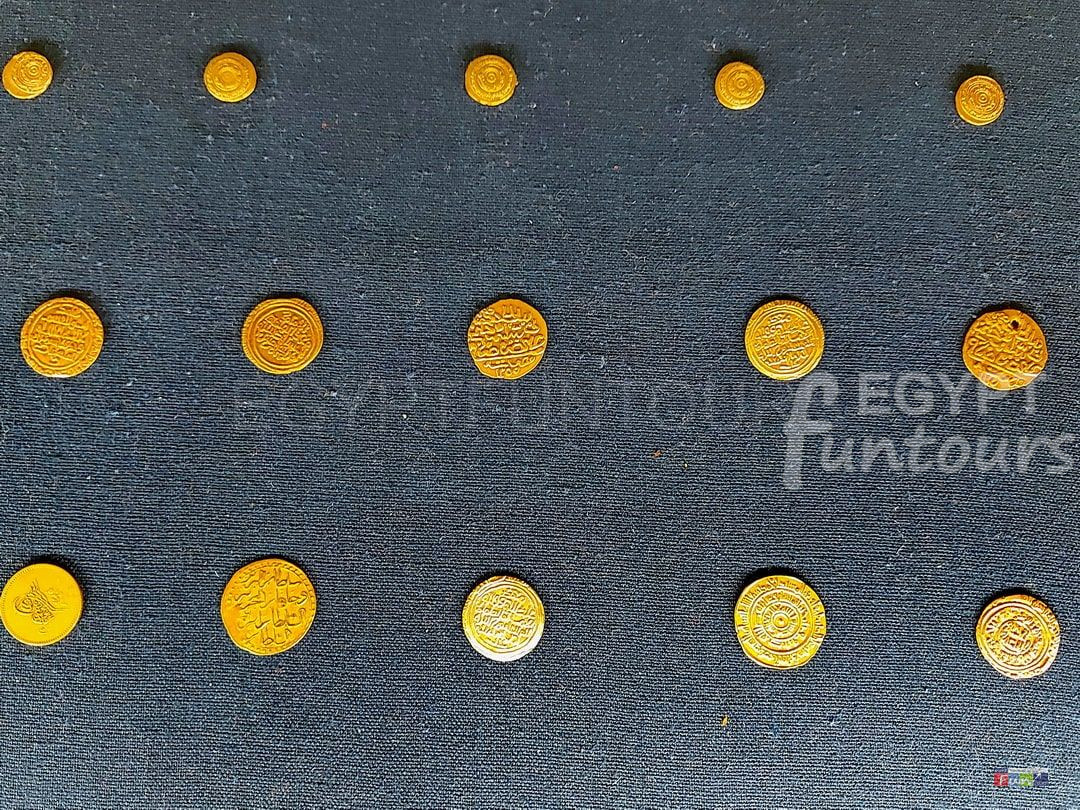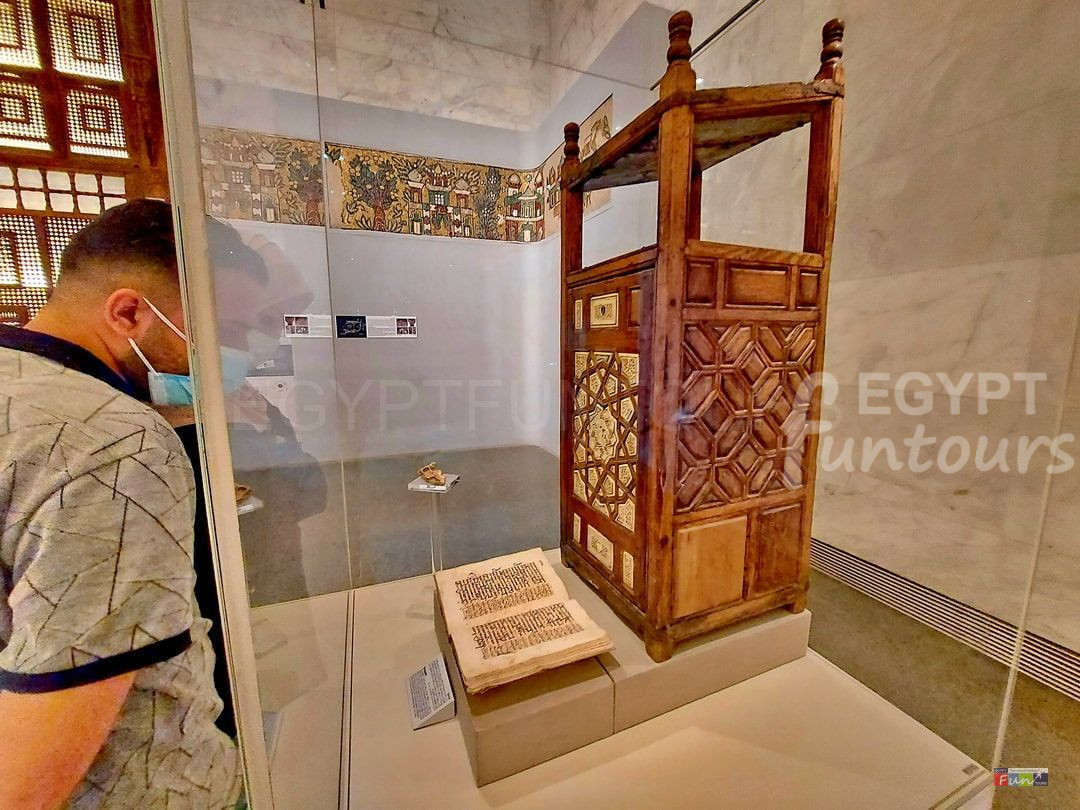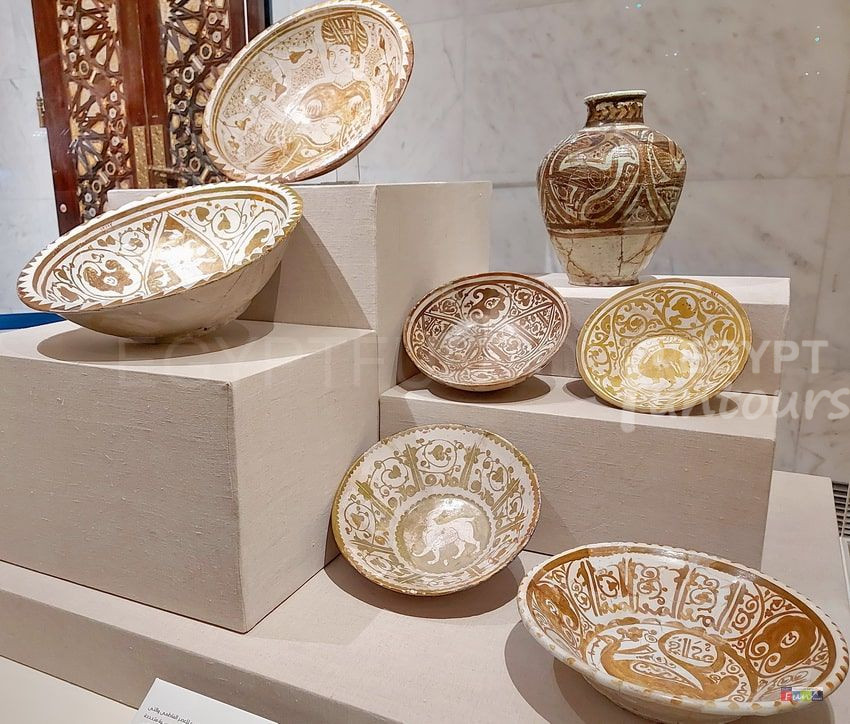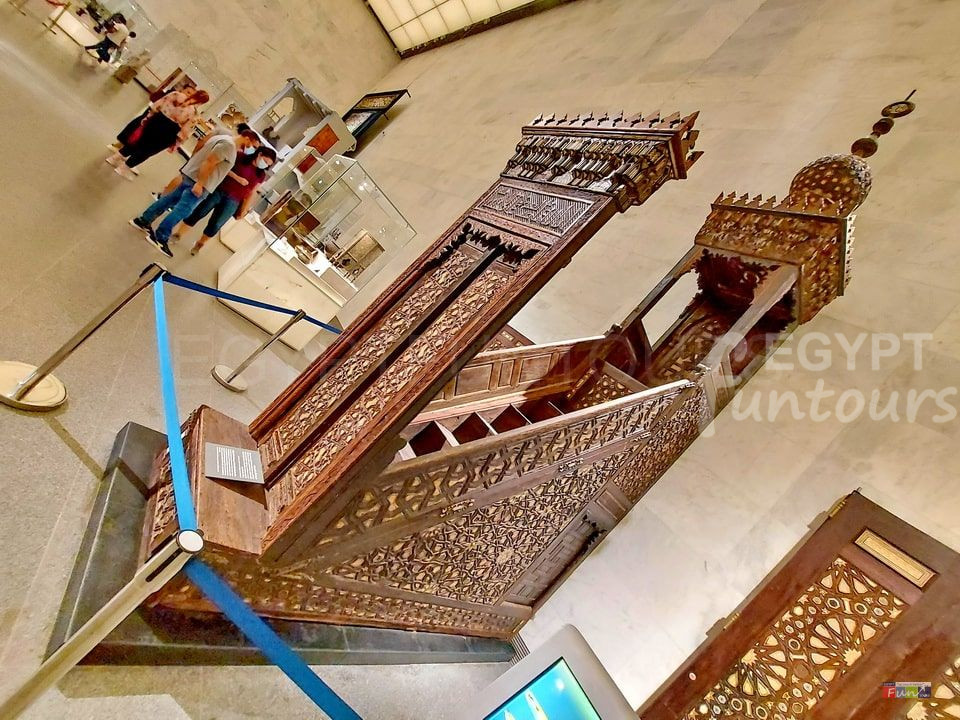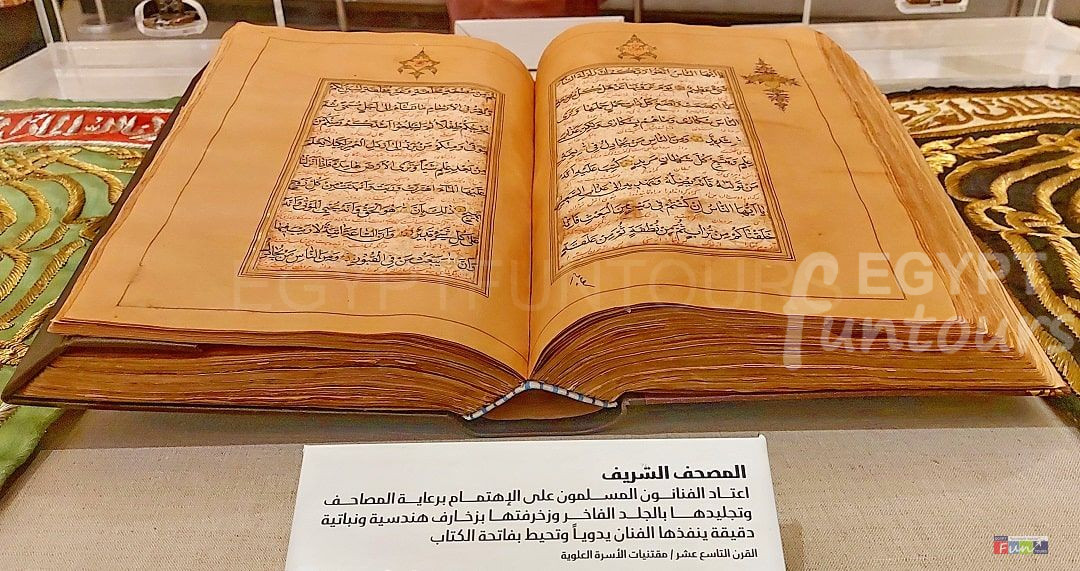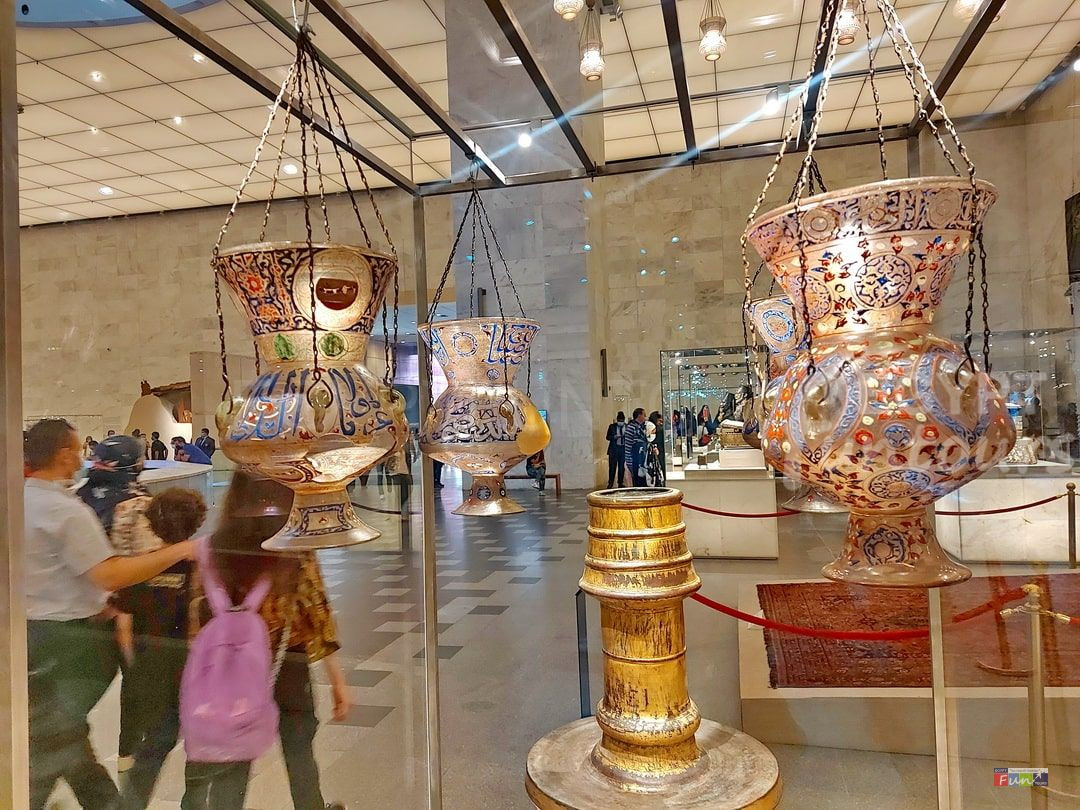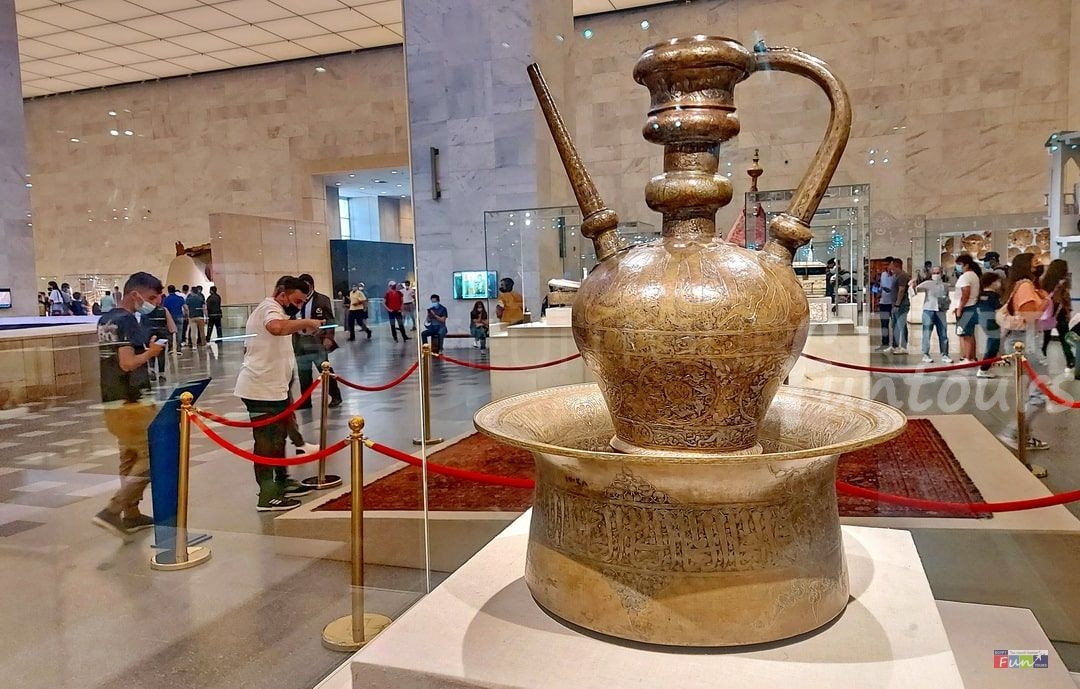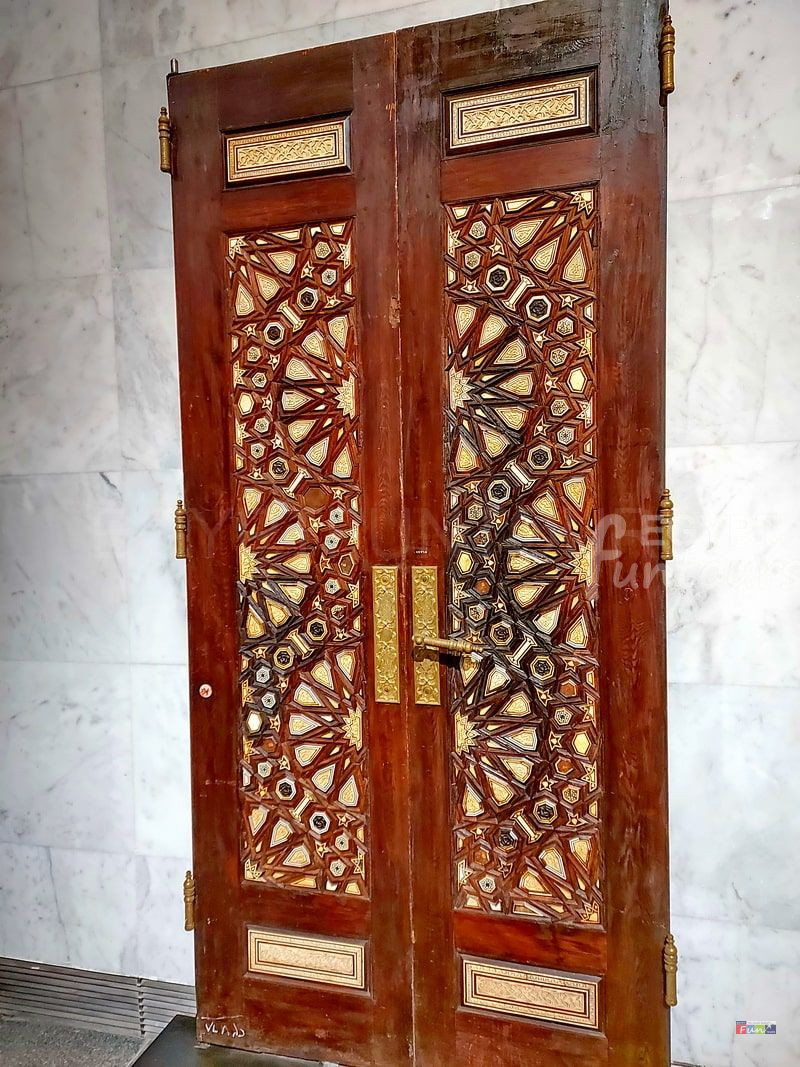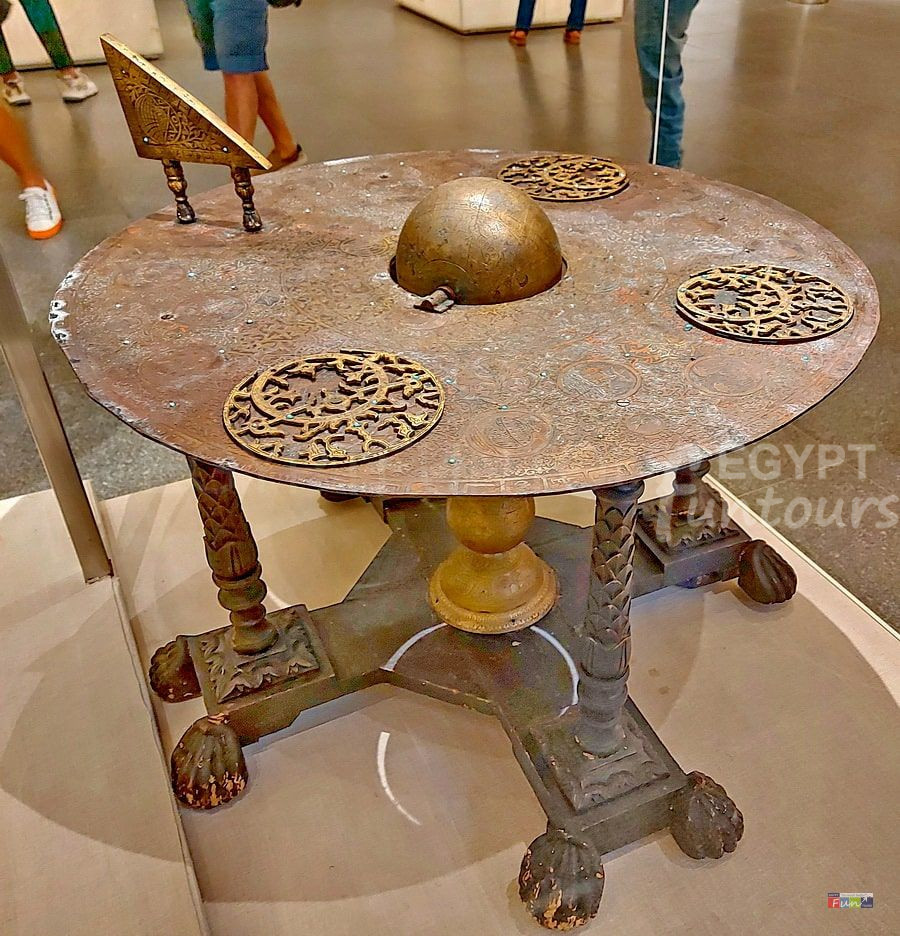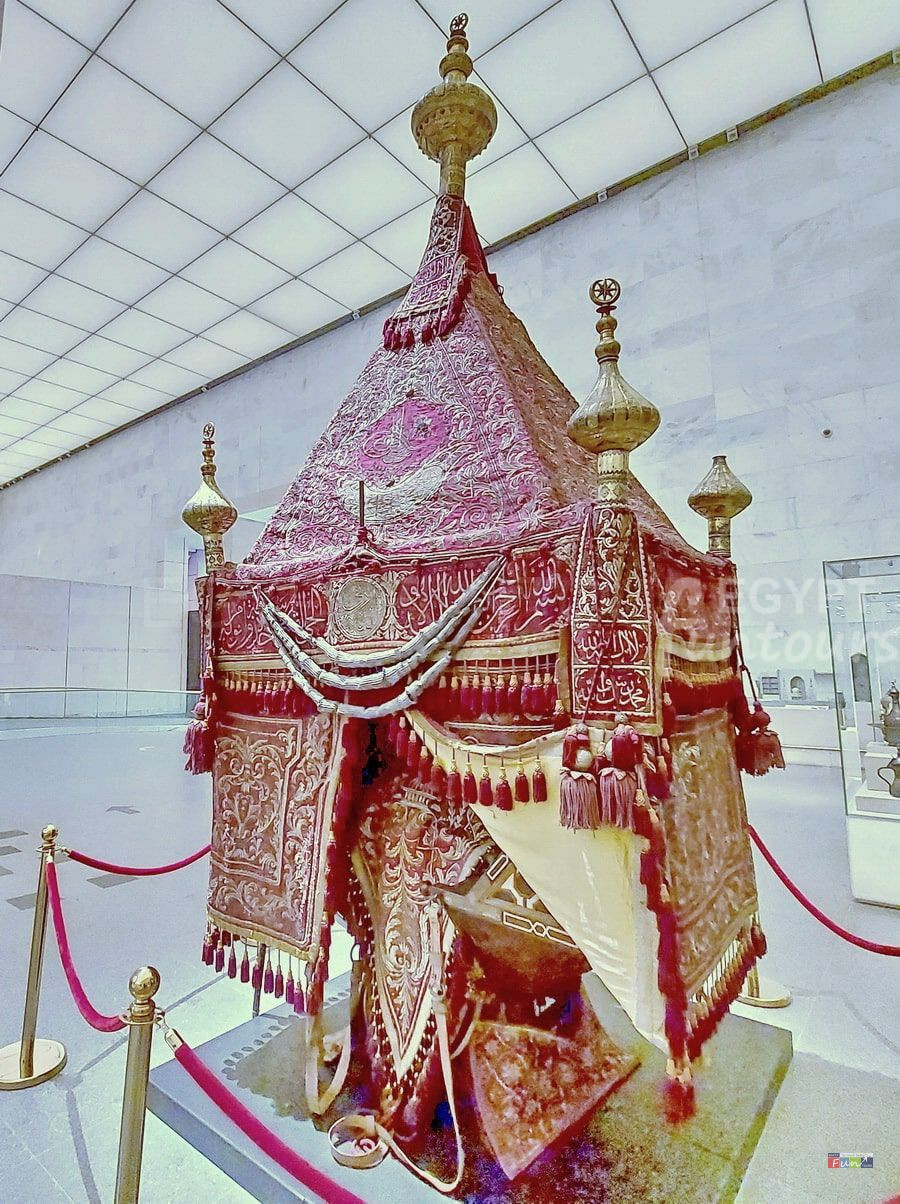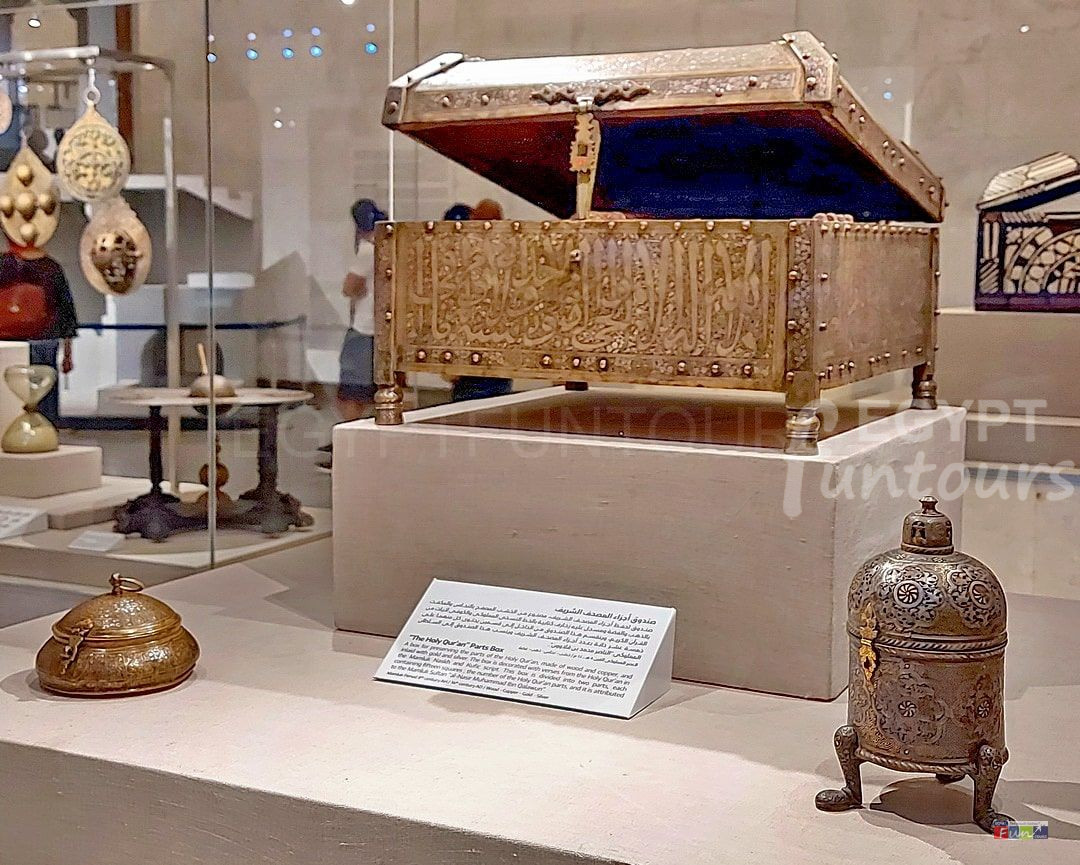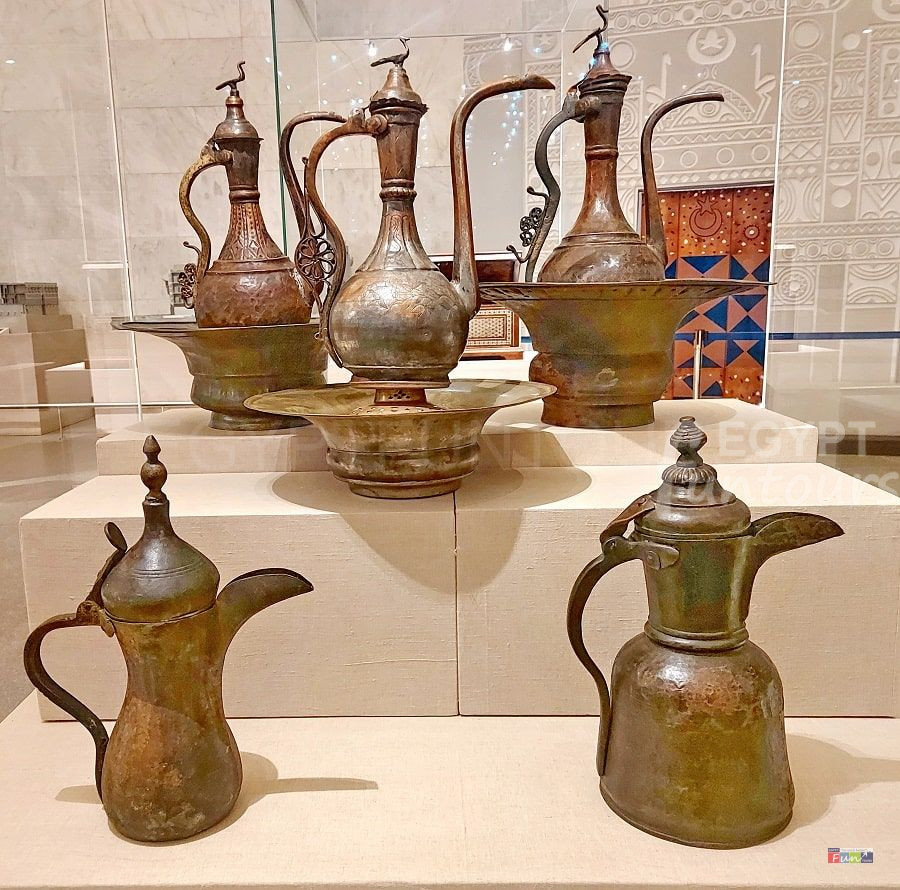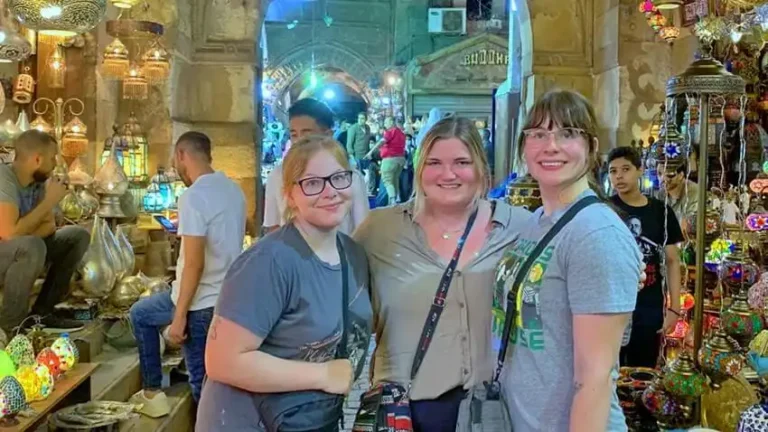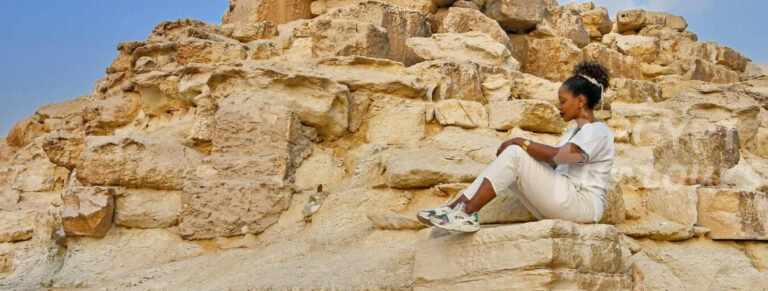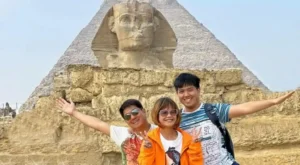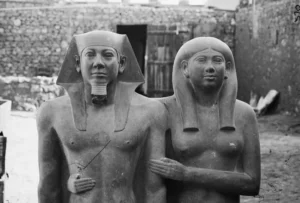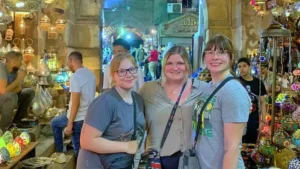Islamic Artifacts in Civilization Museum
Islamic Period (641 – 1517 A.D.) – NMEC
This is a list of all the Islamic period artifacts on display in the National Museum of Egyptian Civilization (NMEC). In 21 AH / 642 A.D., Egypt became an Islamic state under the Rashidun Caliphate. Since then, Egypt has been a source of Islamic culture and civilization, with various dynasties ruling the region, including the Abbaside, Tulunid, Ayyubid, and Mamluk Sultanates. Egypt became a hub for scientists, academics, and authors, and a major cultural center of the Islamic world. This era saw the development of various architectural and creative features, from religious and civic buildings to philanthropic and military structures.
Decorative Arts and Metalwork
Islamic artists excelled in various crafts. Glass and lamps, woodwork, and lathe wood thrived. Weaving, ceramics, and pottery were also prominent. For metalworking, artists used techniques like inlaying, grooving, and bracing.
Architectural Elements
The Mashrabiya became a key architectural and decorative element. It served as a source of natural light and ventilation while also allowing women to see outside without being seen. The Mashrabiya is a unique feature of Egyptian urban architecture and influenced many structures in both the East and Europe.
Science and Calligraphy
During the Islamic civilization in Egypt, various scientific fields flourished, including medicine, astronomy, and chemistry.
The era also saw the invention of many styles of Arabic calligraphy, such as Kufic, Naskh, and Thuluth. These styles can be seen on the walls of many buildings, as well as on decorative objects and in manuscripts.

